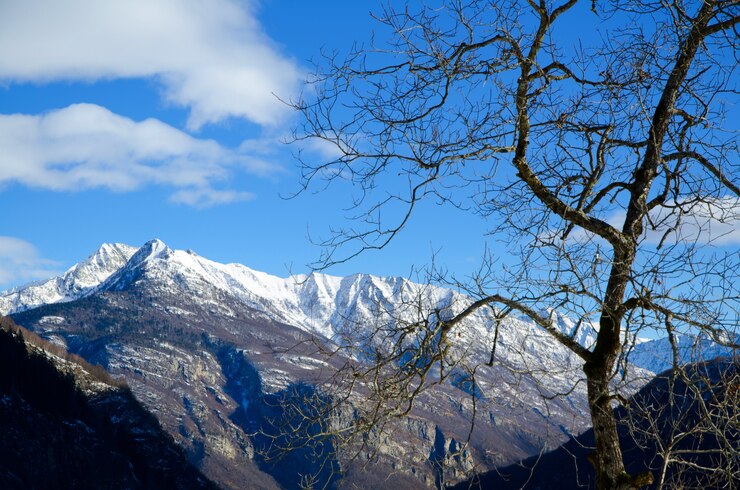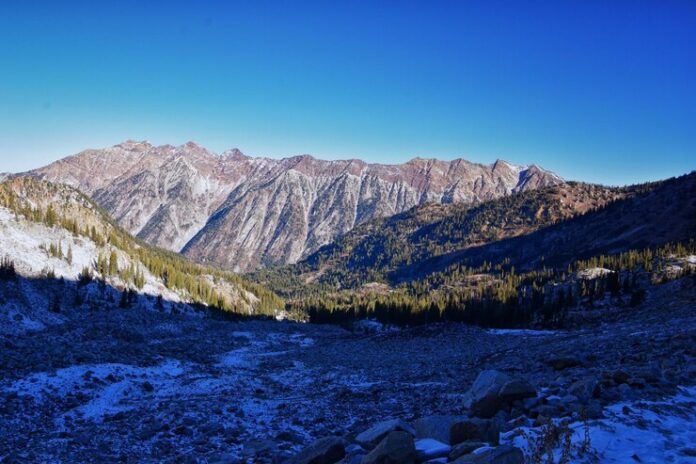The Allure of Mountain Valleys
There’s something undeniably enchanting about mountain valleys nyt. Picture yourself standing at the base of towering peaks, surrounded by lush greenery, with a clear, winding river cutting through the landscape. The air is crisp and clean, filled with the scent of pine and wildflowers. For many, this scene evokes a sense of peace and wonder that is hard to find anywhere else. Mountain valleys offer a sanctuary from the hustle and bustle of modern life, providing a place to reconnect with nature and recharge your spirit.
Mountain valleys are not just about scenic beauty; they also offer a sense of adventure. Whether it’s hiking through dense forests, exploring hidden waterfalls, or simply sitting by a tranquil stream, these valleys provide endless opportunities for exploration and discovery. The sense of isolation and remoteness found in many mountain valleys adds to their allure, giving travelers a chance to experience nature in its purest form.
For those who love photography, mountain valleys are a dream come true. The interplay of light and shadow on the mountains, the vibrant colors of the flora, and the dynamic landscapes create endless opportunities for capturing stunning images. Every visit to a mountain valley offers a new perspective and a fresh set of visual delights.
The Geography of Mountain Valleys
Understanding the geography of mountain valleys helps us appreciate why these landscapes are so captivating. Mountain valleys are formed through various geological processes, including erosion, glacial activity, and tectonic movements. These valleys can take several forms, such as V-shaped valleys carved by rivers, U-shaped valleys formed by glaciers, and rift valleys created by tectonic forces.
The diversity of mountain valleys around the world is astonishing. In the Himalayas, you’ll find deep, narrow valleys with steep sides, while the Rocky Mountains boast wide, expansive valleys with rolling hills. Each valley has its own unique features, from the rugged terrain of the Andes to the lush, green landscapes of the Alps. The New York Times has highlighted several notable mountain valleys, showcasing their geographical diversity and the breathtaking beauty they offer.
One of the most famous mountain valleys is Yosemite Valley in California. Formed by glacial activity, this U-shaped valley is renowned for its dramatic cliffs, towering waterfalls, and ancient giant sequoias. Another notable example is the Lauterbrunnen Valley in Switzerland, often described as one of the most beautiful valleys in the world, with its lush meadows and cascading waterfalls.
The Role of Mountain Valleys in Biodiversity
Mountain valleys are not just beautiful; they are also biodiversity hotspots. These unique ecosystems support a wide range of flora and fauna, some of which are found nowhere else on Earth. The varied terrain, microclimates, and isolation of mountain valleys create ideal conditions for the evolution of diverse species.

In many mountain valleys, you’ll find a rich tapestry of plant life, from delicate alpine flowers to towering conifers. These plants have adapted to the harsh conditions of high altitudes, with some species exhibiting remarkable resilience. For example, the Edelweiss flower, found in the European Alps, has adapted to grow in rocky, nutrient-poor soil, while the Bristlecone Pine, one of the oldest living trees, thrives in the arid conditions of the Sierra Nevada.
The animal life in mountain valleys is equally diverse. From elusive snow leopards in the Himalayas to majestic condors soaring over the Andes, these valleys provide habitat for a wide range of species. Many of these animals have developed unique adaptations to survive in the challenging environment of mountain valleys. For instance, the Alpine Ibex has specially adapted hooves that allow it to navigate the steep, rocky terrain of the European Alps.
Mountain valleys also play a crucial role in conservation efforts. Their isolation often protects them from human encroachment, making them vital refuges for endangered species. Conservation organizations around the world are working to preserve these unique ecosystems, recognizing their importance for biodiversity and the health of our planet.
Cultural and Historical Significance
Mountain valleys have been central to human history and culture for millennia. Many ancient civilizations settled in these valleys, drawn by the fertile land, abundant water, and natural protection offered by the surrounding mountains. These valleys have become cultural heartlands, rich with history, traditions, and stories.
For example, the Sacred Valley of the Incas in Peru is a stunning mountain valley that was once the heart of the Inca Empire. Today, it is home to several important archaeological sites, including the famous ruins of Machu Picchu. The valley’s terraced fields and ancient irrigation systems are a testament to the ingenuity and engineering prowess of the Inca people.
In Europe, the Lauterbrunnen Valley in Switzerland has inspired countless artists, writers, and poets. Its stunning landscapes have been the backdrop for works of literature and art, and it continues to draw tourists from around the world. The valley is also home to traditional Swiss villages, where visitors can experience the region’s rich cultural heritage.
The New York Times has featured several mountain valleys with significant cultural and historical importance. These valleys offer a glimpse into the lives of the people who have called them home for centuries, providing a deeper understanding of the connection between humans and the natural world.
Adventure Travel in Mountain Valleys
For adventure travelers, mountain valleys offer a playground of possibilities. Whether you’re an experienced mountaineer or a casual hiker, there are countless ways to explore and enjoy these stunning landscapes. From trekking through remote valleys to white-water rafting in glacial rivers, the opportunities for adventure are endless.
One of the most popular activities in mountain valleys is hiking. Trails ranging from easy walks to challenging multi-day treks allow you to experience the beauty and serenity of these valleys firsthand. For example, the Annapurna Circuit in Nepal takes you through a diverse range of landscapes, from lush subtropical forests to high-altitude deserts, offering stunning views of the Himalayas along the way.
In addition to hiking, many mountain valleys offer opportunities for rock climbing, mountain biking, and paragliding. The rugged terrain and dramatic landscapes provide the perfect backdrop for these adrenaline-pumping activities. For water enthusiasts, kayaking and rafting in the fast-flowing rivers of mountain valleys can be an exhilarating experience.
Sustainable tourism practices are essential to preserving the natural beauty and ecological integrity of mountain valleys. Travelers are encouraged to follow Leave No Trace principles, support local communities, and choose eco-friendly accommodations and tour operators. By doing so, we can ensure that these stunning landscapes remain pristine for future generations to enjoy.
Conclusion
Mountain valleys are among the most enchanting and diverse landscapes on our planet. Their geographical features, rich biodiversity, cultural significance, and endless opportunities for adventure make them irresistible to nature enthusiasts, adventure travelers, and geography buffs. Whether you’re exploring the lush valleys of the Alps or trekking through the dramatic landscapes of the Himalayas, mountain valleys offer a unique and unforgettable experience.


